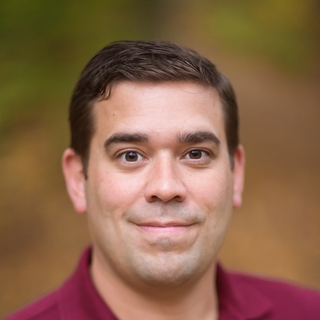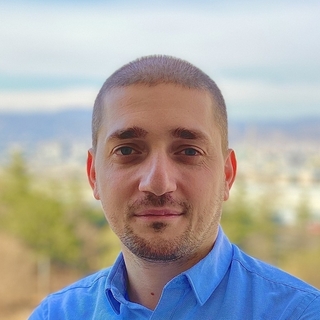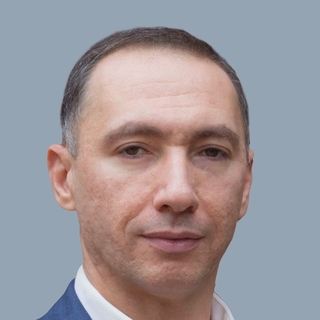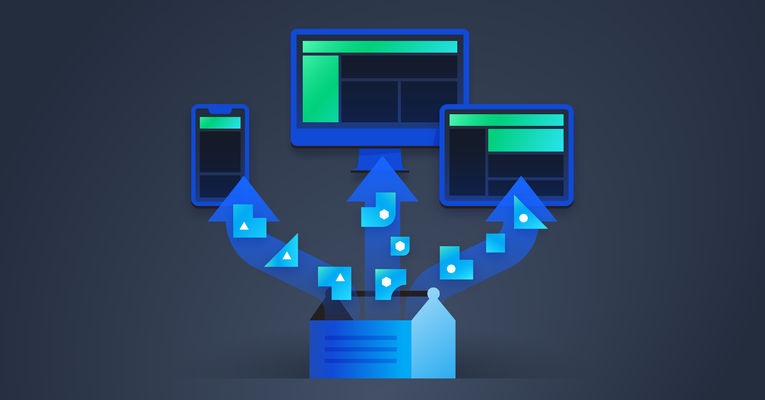The Skyrocketing Demand for SaaS Developers
Hiring software-as-a-service (SaaS) developers is one of the most challenging staffing tasks in the tech industry, thanks to SaaS platform development becoming a cornerstone of the global software industry. The market for SaaS apps is projected to reach nearly $820 billion by 2030, fueled by an increasing preference for cloud computing over in-house software solutions.
Large enterprises, startups, and SMBs alike are attracted by SaaS solutions thanks to the enhanced productivity, data accessibility, and cost-efficiency they can bring. Their ability to provide scalability without the need for extensive on-premise infrastructure has made it particularly attractive for SMBs aiming to digitalize operations affordably. SaaS providers have a pricing model that provides increased revenue stream stability compared with those of traditional software development — stability that also benefits consumers. It’s no leap, then, to suggest that the paradigm will continue to play a crucial role in the future of business infrastructure across a wide array of sectors, including finance, e-commerce, healthcare, and retail.
Hence the surge in demand for scalable, subscription-based products. However, hiring software developers is complicated due to the specialized skills needed to create secure, scalable, and user-friendly SaaS apps. Many candidates may have experience with full-stack development but lack expertise in SaaS-specific requirements like multitenant architecture, billing automation, and API creation. Finding software engineers with the right blend of technical skills and industry knowledge — especially those experienced in product development—can seem like finding a needle in a haystack.
This guide equips hiring managers with the insights needed to navigate the process of hiring skilled SaaS developers. It includes key skills and qualifications, how to structure effective job descriptions, and a sample of interview questions to help assess candidates. With the right approach, you can identify software development professionals with the technical acumen and experience needed to drive your organization’s growth.
What Attributes Distinguish Quality SaaS Developers From Others?
SaaS developers are full-stack programmers specialized in building and maintaining subscription-based cloud computing applications. Their experience with multiple technologies at each software development layer is what lets them choose the best combination for a given project — for example, between choices like Angular and React for the (optional) front end, Node.js and Python for the back end, and Amazon Web Services (AWS), Google Cloud Platform (GCP), and Microsoft Azure for the cloud services provider. Beyond full-stack experience with high-availability distributed systems, SaaS software developers are also responsible for implementing multitenancy, including automation for provisioning, deprovisioning, and subscription billing systems.
Top developers have further proven their experience in scaling and know when serverless, microservices, or container-based approaches are most appropriate. Their app development methodologies are customer-centric, and they collaborate well on project management and SaaS design to continuously improve the end product. SaaS experts will know how to execute all of this in the context of serving millions of end users across mobile apps and web applications without breaking any uptime guarantees.
To determine the highest-quality candidates, focus on these five areas:
Multitenancy and scalability: Multitenancy is where multiple tenants (e.g., client organizations) share a single application instance; this common facet of SaaS architecture goes hand-in-hand with scalability by averaging the workload of all tenants across the system. Quality developers are adept at designing databases for both performance and security so that tenants have seamless experiences without interference from each other. When a platform experiences rapid growth, a quality developer will ensure consistent, full-time performance — for tenants in any time zone — with techniques like distributed deployments, load balancing, and autoscaling.
API design: The backbone of most SaaS products, APIs enable clients to integrate external platforms with their own custom software. Skilled developers excel at designing robust REST or GraphQL APIs, securing them with technologies like OAuth, and supporting them via best practices like automatically provisioned test sandboxes and up-to-date documentation. In fact, a growing number of platforms are API-first or even API-only, so the relevance of API design and deployment will only continue to grow.
Data security and compliance: SaaS applications handle a large volume of sensitive data; depending on the industry, this can include trade secrets, medical records, and financial statements. An experienced developer will consider the secure storage and transmission of data as an obvious priority, preventatively following best practices. They will also be familiar with relevant data handling standards like the GDPR, HIPAA, PCI-DSS, and CCPA; these regulations are crucial for client trust and often determine whether a product can be legally implemented in certain markets.
Billing and subscription management: Experienced developers have experience implementing billing solutions that handle tiered pricing, pay-per-use models, or monthly subscriptions. They also help SaaS providers manage revenue streams effortlessly with features like invoice generation, payment processing, and data tracking, allowing them to be agile in their response to changing market conditions.
User Experience (UX): High-quality software developers pay close attention to the UX — regardless of whether said user represents a non-technical, GUI-only audience or developers consuming the SaaS solution’s public or partner API. Given that SaaS products often operate on a subscription basis, customer retention is a high priority among business needs, so quality developers know the importance of creating interfaces that are intuitive, responsive, and reliable. Expert developers minimize churn using performance analytics and real-time feedback to rapidly iterate and enhance the user experience. They also offer customization without succumbing to the inner-platform effect, whereby the complexity of a system becomes untenable.
While many programmers have experience with cloud services and/or full-stack app development, dedicated SaaS developers bring a strategic approach to architecting solutions tailored to the subscription and pay-as-you-go economies. They can seamlessly handle SaaS-specific challenges, like avoiding data silos, delivering consistent security and performance in a multitenant environment, and balancing customizability with maintainability.
How Can You Identify the Ideal Developers for You?
Even when armed with the above knowledge, it’s unwise to hire SaaS developers without a detailed understanding of the project and team they are meant to help drive. Identifying the ideal developer requires an awareness of your project’s current stage, timeline, resources, technical needs, and budget.
Step 1: Define the project and role scope
To find a SaaS software developer with the right skill set, you’ll need to know whether you need to build a product from scratch, scale an existing system, or address specific project requirements like security, integration, or performance optimization. This will help pinpoint the ideal candidate’s skills, such as cloud infrastructure knowledge, multitenancy or hybrid tenancy experience, and expertise with particular databases, programming languages, and frameworks.
Additionally, consider the role’s focus, limitations, and the amount of support available from the rest of the development team, freelancers, or part-time contributors over time. For example, developing specific features within an existing project may merely require proficient coding skills, whereas new integrations with first- and third-party systems can increase collaboration requirements for other teams or team members. In contrast, teams with minimal resources may need someone who can take the lead on architectural decisions, in which case you’ll want to see (lasting) proof of a candidate’s good judgment in system design.
Step 2: Define the skill gap the developer will cover
Does your project already (plan to) use specific technologies or services? For both the codebase and anticipated support, the less being provided by your company, the more expertise the candidate will need. In the case of a greenfield project, they may need to be capable of making prudent choices about your project’s tech stack. Consider the specific subskills a given developer would bring to each of the following aspects of a project:
-
Cloud infrastructure, particularly if there’s a technical or business-imposed requirement to use a specific cloud provider like AWS (Amazon), GCP (Google), or Azure (Microsoft)
-
Multitenant design, including how and when to blend it with a single-tenant approach to create a hybrid tenancy model. Security skills, especially those related to regulatory compliance, are essential.
-
Front-end frameworks (like React, Angular, Vue, or Svelte) for platforms that offer front ends
-
Back-end frameworks (like Express.js or Django), especially for API-first offerings
-
Programming languages (like JavaScript, Python, or Go)
-
Databases, both relational (e.g., PostgreSQL, Microsoft SQL Server) and non-relational (e.g., MongoDB). SaaS app development often requires strategies for handling vast amounts of data, and being able to recognize and integrate the best tool for the job is invaluable.
-
API paradigm — e.g., REST or GraphQL — especially if they’re to be responsible for managing a public or partner API.
If your team is still ramping up, a good candidate is one who also has project management experience in a SaaS context. Your broader team culture context may further require that they be comfortable with Agile methodology or other software development methodologies.
Step 3: Look to hire a developer with appropriate experience
Junior developers are suitable for smaller, well-defined tasks within an established framework. For example, if your project is limited to implementing UI updates or simple feature enhancements, you may not need someone with SaaS experience at all — for example, an Angular or React developer may suffice, with guidance from a senior team member. In contrast, expert developers are essential for building complex infrastructure, handling regulatory compliance, and solving scalability issues. Their years of experience help prevent costly errors in these high-stakes areas, particularly in the early stages or with critical refactoring efforts.
Junior developers can manage foundational SaaS application development and contribute to preexisting projects. They can handle basic data management and CRUD operations, especially in single-tenancy contexts, and may gain multitenancy experience over time by assisting with user roles and permissions. They can set up basic API integrations with third-party services like Stripe (for payments) and Auth0 (for authentication). They may need mentorship to fully understand distributed data management and ensure optimal API response times as user loads increase.
Mid-level developers can work independently on more complex features, handling multitenancy requirements like per-tenant data isolation and resource-sharing optimization, especially at the database level. They have experience with caching strategies and choosing between tools like Redis and memcached to enhance API performance at scale. They can design robust data pipelines, manage data transformations for reporting, and produce high-quality analytics in alignment with business needs. These developers understand security considerations such as tenant-specific data encryption and auditing logs. They can leverage application performance monitoring (APM) tools like New Relic, AppDynamics, and Datadog to troubleshoot performance (and security) issues in real time.
Senior developers can build a solution from the ground up or lead major transformations to existing architectures, in neither case compromising security or scalability. They can select and implement the most appropriate model (e.g., siloed vs. pooled databases) to meet security and performance demands. Used to being responsible for the continuous integration/continuous delivery (CI/CD) of high-traffic APIs, they know how to add and when to optimize load balancers, serverless functions, and auto-scaling cloud infrastructure. They have expertise in secure billing integrations and edge-case complexities like prorated billing and privacy-compliant cross-tenant data aggregation for UX and benchmarking analytics. Senior developers also provide mentorship in best practices, making architectural decisions that support long-term product growth and software development maintainability.
Good candidates will have experience with common use cases like performance scaling (via technologies like AWS Elastic Load Balancing or Kubernetes) for when you anticipate high user loads, data security and compliance in regulated industries, and API development and integration. Be sure to understand the difference between these two types of API use cases. Integrating with a third-party API can be relatively straightforward and may not need a dedicated SaaS developer. In contrast, developing and publishing a public or partner API for your own product requires much more experience to execute.
How to Write a SaaS Developer Job Description for Your Project
To write an effective job description, start with a full-stack developer job description template and integrate elements as dictated by your role, technology specifics, and SaaS project needs. For example, your team may be looking primarily for a back-end developer or to fill a gap in data analysis, big data, or quality assurance (QA) engineering experience. Or your project may need someone with greater expertise in specific front-end frameworks or libraries like React, back-end technologies like Node.js or Java, databases like Microsoft SQL Server, or cloud providers like AWS.
Be sure to include the most important aspects in the job title, such as “Senior SaaS Developer With AWS Experience” or “High-Performance SaaS Engineer for Scalable Web Applications” as the main way to filter inappropriate candidates.
All other technology stack and methodology requirements or nice-to-haves should be listed in the description. Remember to also cover the project’s goals, current stage, and key near- and mid-term challenges; the role’s main responsibilities; and any expectations regarding primary collaborators, stakeholders, and team culture.
The field is complex and varied — the more detail, the more likely you are to find the right candidate and avoid either of you experiencing any negative surprises.
What Are the Most Important Technical Interview Questions?
An insightfully crafted interview process will include technical questions from various skills specific to your technology stack and the role you’re filling. For example, it may include questions about data modeling, SQL, DevOps, AWS, or discussions around common cybersecurity or JavaScript pitfalls. It will also assess how candidates think about challenges like regulatory compliance and tenancy models using questions like these:
How do you approach multitenancy?
Good candidates will outline different multitenancy models, such as shared, “soft-isolated,” and fully isolated databases, along with their pros and cons:
- A shared (or pooled) database is fully multitenant and can use techniques like data tagging — i.e., keeping a
tenant_id column on all applicable tables — to separate tenant data. They can then use row-level security to enforce data privacy.
- Soft-isolated (or bridged) databases allocate a separate schema for each tenant. This allows a limited amount of database resources to continue to be shared. It further isolates each tenant but comes at the cost of increased design and maintenance complexity.
- A fully isolated (or siloed) database signals a single-tenant approach, i.e., each tenant has their own database. This results in maximal separation but also the highest infrastructure costs.
In a hybrid tenancy model, what sorts of contexts are appropriate for each type of tenancy approach?
Candidates should be able to broadly explain why single tenancy can make sense for large-enterprise tenants (who may require it explicitly or merit it via performance standards) and for those with more highly regulated or privacy-sensitive data (e.g., in the medical or financial sectors). Even then, multitenancy may still make sense for some authentication functionality and other core services.
To take another example, AI-enabled implementations can be much more cost-effective if ML models and computation engines are shared, while tenant-specific data has stricter isolation applied. The same holds true for sharing core features and computation resources for many types of software, including CRM platforms and project management tools.
How would you design an application to handle scaling challenges efficiently?
A strong answer will delve into horizontal scaling methods, database sharding, and data caching strategies. Look for specifics, such as using Redis or memcached for caching frequently accessed data, or implementing autoscaling groups in AWS, GCP, or Azure. Candidates who discuss particular scaling tools show a practical understanding of deploying and managing SaaS solutions — whether the tools discussed are cloud-specific, like AWS Elastic Load Balancing, or more widely applicable, like Kubernetes for container orchestration.
If the candidate doesn’t relate a story about cost management (or can’t, even if prompted for one), their approaches may lead to bloated infrastructure: Often, an over-engineered solution can succeed at scaling but quickly rack up unnecessary cloud fees.
The same goes for scalability bottlenecks like database lock contention (do they know the use cases for optimistic and pessimistic concurrency?) and noisy neighbor problems — a blank stare on these topics may signal limited experience.
Why Do Companies Hire SaaS Developers?
SaaS developers are invaluable to companies that are creating scalable, secure, and cost-effective cloud solutions serving large numbers of customers through web development, mobile apps, and enterprise platforms. The development process is complex, as it must meet diverse customer needs, incorporate multitenancy intelligently, leverage CI/CD best practices, and ensure strict data security compliance. SaaS startups and enterprises alike need developers who can craft a responsive, maintainable infrastructure, ready to adapt it as customer needs and usage patterns — not to mention a litany of technological dependencies — continually evolve.
As SaaS applications continue to be fundamental to information service approaches in every industry and sector, providers will need the value that only effective developers bring. The best SaaS developers will also bring discernment when it comes to leveraging cutting-edge technologies and strategies, like machine learning for predictive analytics and automation, ensuring complex deployments are accomplished with minimal downtime in the competitive market. With the insights provided in this guide, you’re equipped to assess and hire SaaS developers to deliver durable solutions, ongoing improvements, and lasting impact on your organization.



























